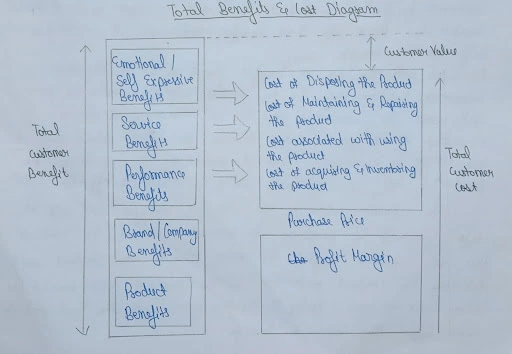Customers are expected to consistently provide value and set higher standards in their pursuit of excellence and providing value to customers. Here, we come to know about the total customer value that helps in business growth. Customers compare brands and goods based on characteristics, costs, and sources before selecting one.
They base their choice on the concept of value maximization. Whichever products deliver higher value compared to others is likely to have a higher customer franchise. Within the period of mobility, search cost, and limited knowledge, customers play the role of value maximization. They expect that certain products will deliver higher value compared to others. Customers will buy products & services, which they perceive will offer higher delivered value.
Total Customer Value
Total customer value is the perceived monetary value of the bundle of economic, functional, and psychological benefits that consumers expect from a given market offering. Customers’ perceived value is the difference between the prospective customer’s evaluation of all the benefits and all the costs of an offering and the available perceived alternatives. Total customer cost is the bundle of costs that customers expect to incur in evaluating, using, and disposing of the given market offering. Also, the classification of customer value affects the system.
Total Customer Value Formula
Total Customer Value = Total Benefits – Total Costs
Total customer value is the value that comes after deducting total costs from the total benefits obtained from a product/service.
Total Benefits & Cost Diagram of Customer Value

A customer expects different kinds of benefits in purchasing a product. These benefits are combined to give the customer total value. The basic benefit is the feature or physical product benefits. When he is buying a brand, he is also getting some amount of brand/company name benefits. Performance-related benefits are utilitarian benefits. Each product comes with a certain level of service benefits also. Above all these benefits, customers get emotional and self-expressive benefits.
Associated with this set of benefits comes a set of costs. Customers have to pay for the product, which includes the price that covers the company’s price and profit margin of the dealer. Ownership of the product also involves cost of acquisition and inventorying, cost of maintaining and repairing the product, cost associated with using and disposing of the product.
So, total customer value is the net of benefits over all the costs involved in purchases. A marketer needs to evaluate this cost assertion beyond the mere price of the product while delivering his product proposition in the market. In a market like India, customers are likely to compare prices with the final product value before they make a decision.
How to Measure Customer Value
Measuring total customer value is the first step in optimizing it.
- A limited number of inquiries to your customers
- Identify the expenses and benefits to the customer.
- Determine if the benefits exceed the costs.
1. A Limited Number of Inquiries to your Customers
You must interact with your clients directly in order to track their value. Inquire about the value your company is already delivering and how it can do so in the future. Many businesses choose to call clients directly or send out regular surveys via email to collect feedback from customers.
First, develop a short list of inquiries that will enable you to assess the value you’re providing. Customers could be asked, for instance, how your product or service helped them reach their objectives or how your business might be improved or made more valuable.
2. Identify the Expenses and Benefits to the Customer
You should ask quantitative inquiries in addition to qualitative ones to determine the worth of your goods and services. You may use a scale from 1 to 5 to ask customers to rate their level of satisfaction with their purchase in order to gauge perceived value. The average numerical rating can then be used to assess whether your business is providing good value. Next, make a list of the ways your team provides—and fails to provide—customer value once you receive your input.
3. Determine if the Benefits Exceeds the Costs
At this point, you can begin evaluating if the advantages (such as convenience, quality, and brand recognition) outweigh the disadvantages. Although measuring your customer value requires time and effort, the knowledge you receive will be priceless.

